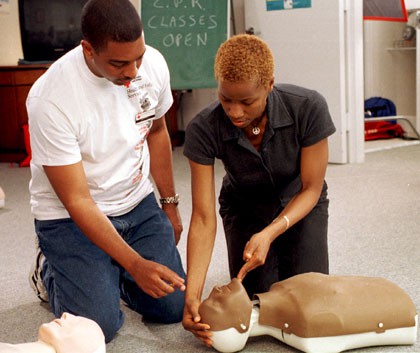
Traditional, instructor led, in-person training of CPR skills has become more challenging due to the COVID-19 pandemic. Research just published in the Scandinavian Journal of Trauma, Resuscitation and Emergency Medicine compared the learning outcomes of standard in-person CPR training (ST) with alternative methods of training such as hybrid or online-only training (AT) on CPR performance, quality, and knowledge among laypersons with no previous CPR training.
The study team searched PubMed and Google Scholar for relevant articles from January 1995 to May 2020. Of the 978 articles screened, twenty met the final inclusion criteria. All included studies had an experimental design and moderate to strong global quality rating. The trainees in the ST group performed better on calling 911, time to initiate chest compressions, hand placement and chest compression depth. Trainees in the AT group performed better in assessing scene safety, calling for help, response time including initiating first rescue breathing, adequate ventilation volume, compression rates, shorter hands-off time, confidence, willingness to perform CPR, ability to follow CPR algorithm, and equivalent or better knowledge retention than standard teaching methodology.
Researchers conclude that alternative CPR training methodologies are as effective or even possibly better when compared to standard in-person classroom CPR training in CPR performance and knowledge acquisition. However, effective CPR quality still largely depends on some in-person training. Due to promising results seen in alternate training methodologies and non-uniformity seen in standard instructional techniques, these instructional methods can be adopted as an alternative, particularly during this time of the COVID-19 pandemic. Moreover, future research should aim to develop uniformity in standard CPR training methodology, which will make comparison with alternative CPR instructional techniques more plausible.
